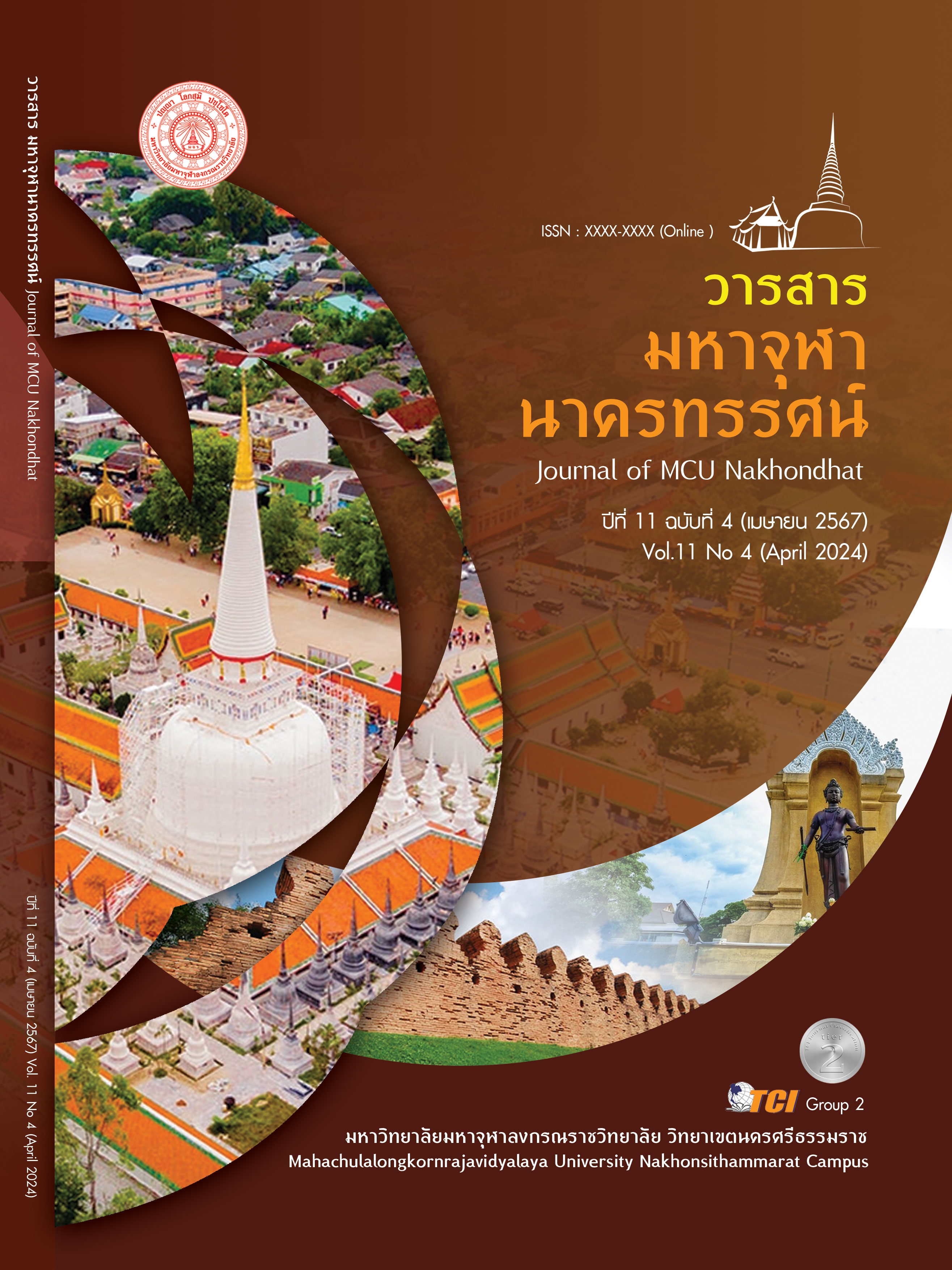GUIDELINES FOR DEVELOPING THE SPATIAL DISTRIBUTION OF RESOURCES IN HIGHER EDUCATION INSTITUTIONS IN CHINA
Main Article Content
Abstract
The objective of this research was to evaluate the guidelines for developing the spatial distribution of resources in higher education institutions in China. The sample group of this research includes administrators from universities. 10 "Double First Class" locations in China, totaling 513 people, were selected by systematic random sampling. The target group is private university administrators to evaluate the adaptability and feasibility of spatial resource distribution approaches in Chinese higher education institutions. The research instrument was a questionnaire consisting of 4 issues: 1) Geography 2) Local economic development level 3) Higher education development level 4) Society resource development level. which has a consistency index of 1.00 and a confidence value of .932. Statistics for data analysis include percentages, means, and standard deviations. The research results found that. The current situation affecting the spatial distribution of resources in all four areas of higher education institutions in China is at a high level. When considering research results in this area from the highest level to the lowest, they are as follows: The highest level is the level of higher education development. Next is the level of local economic development. Level of social resource development and lowest geography Guidelines for the spatial distribution of resources in higher education institutions in China cover 4 issues with 40 measures, including 10 measures to support geographic conditions, 11 measures of local economic development level, 10 measures of higher education development level, 9 measures of social resource development level, evaluation results. The adaptability and feasibility of the guidelines for improving the allocation of higher education resources in China are to a large extent the practices of enhancing human resource capacity in public universities in Guangxi. at the highest level.
Article Details

This work is licensed under a Creative Commons Attribution-NonCommercial-NoDerivatives 4.0 International License.
References
Al - Ansari, T. et al. (2015). Development of a life cycle assessment tool for the assessment of food production systems within the energy, water and food nexus. Sustain. Prod. Consum, 2(2015), .52–66.
Balarin, M. et al. (2011). Understanding Education: a sociological perspective. British Journal of Sociology of Education, 32(1), 127-145.
Clark, B. R. (1983). The Higher Education System: Academic Organization in Cross-National Perspective. Berkeley, LA: University of California Press.
Demas, A., & Arcia, G. (2015). What matters MOST for school autonomy and accountability. Systems Approach for Better Education Results (SABER) working paper, 3(5), 24-39.
Enders, J. (2004). Higher education, internationalisation, and the nation-state: Recent developments and challenges to governance theory. Higher Education, 47(2004), 361-382.
Gould, W.T.S. (1971). Geography and Educational Opportunity in Tropical Africa. Economy and Social Geography, 62(1971), 82-89.


